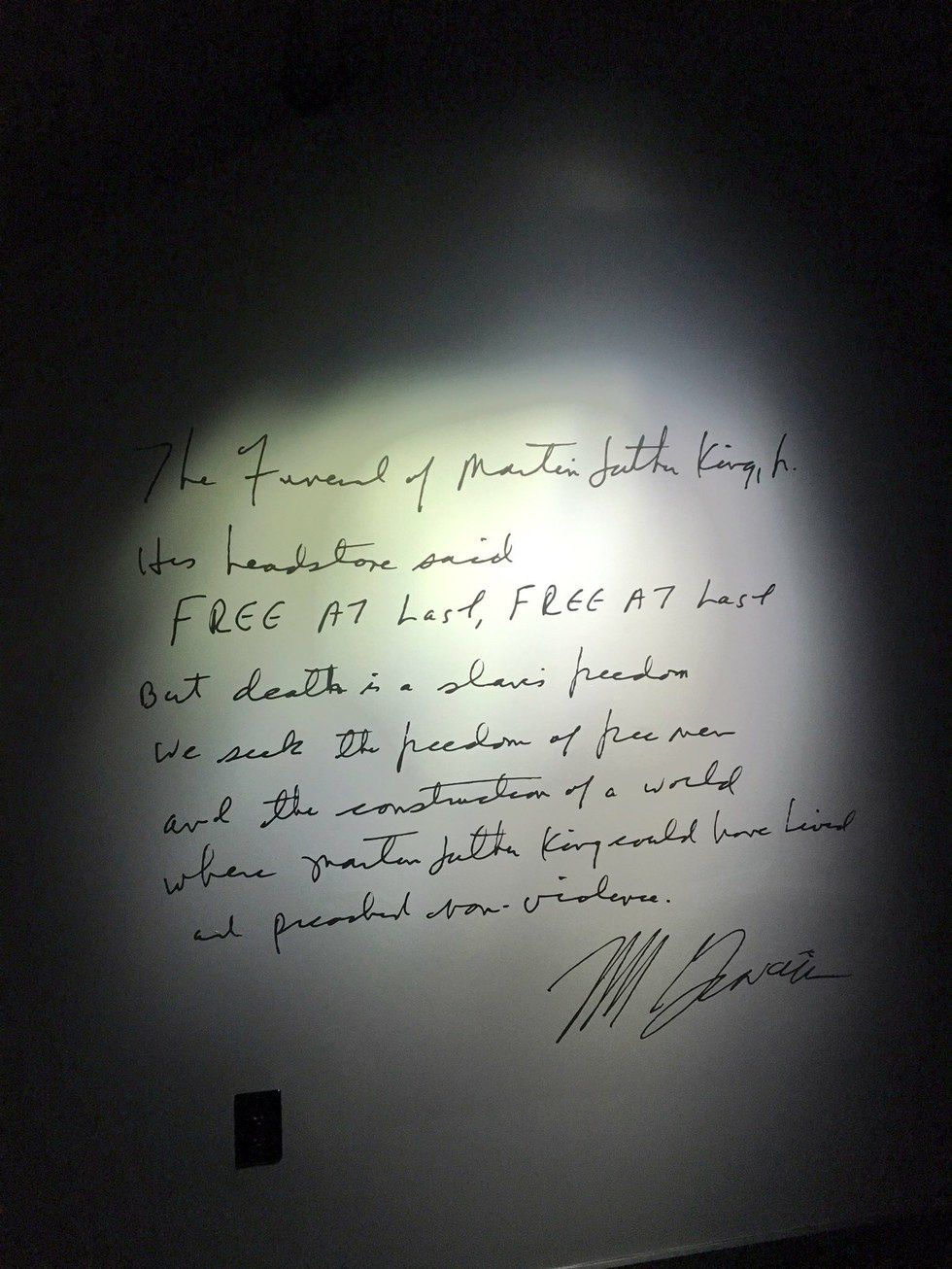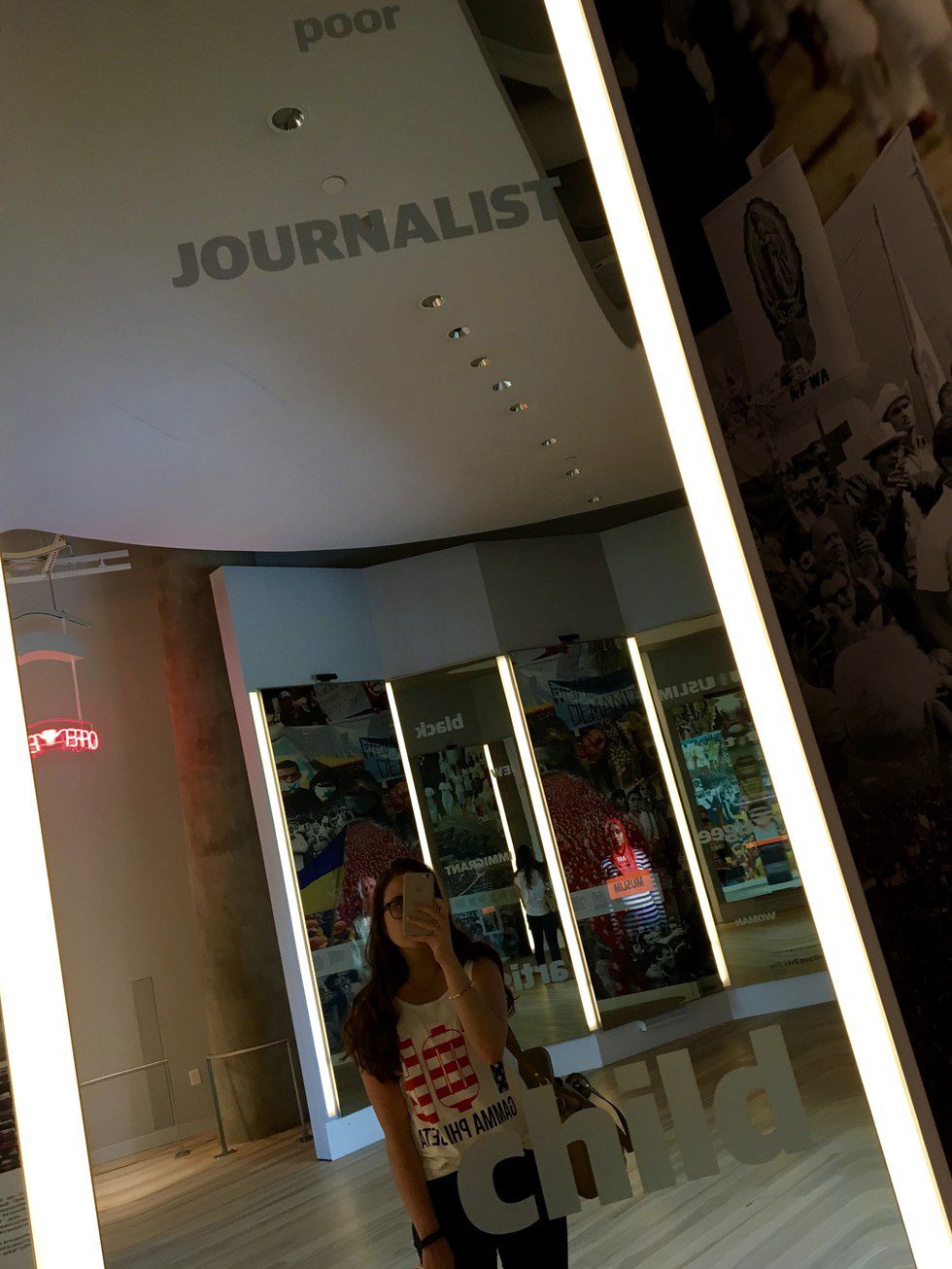I grew all too excited when I learned the hotel I was staying at in Atlanta for a few days last week was a mere 10-minute walk from the National Center for Civil and Human Rights. Majoring in journalism human rights at SMU, I’ve unearthed a deep longing to learn all I can about the injustices of the world and make an impact in the lofty goal of ending as many as possible by sharing that education and holding others accountable to do something with it. Ignorance is not an option, despite how much society attempts to validate it by repeating offenses.
The center reinforced to me the importance of perseverance during tribulations and sorrows – which we we are too familiar with in 2016. Simultaneously, I received a necessary reality check on the so-called tribulations and sorrows of my personal life. How did my lack of sleep that day or stress for the upcoming week compare to the simulation I experienced of a sit-in? The gruff, racist shouting and raucous fighting noises came so loud through the headphones I thought my stool was actually shaking from the kicks I was hearing.
Designed to provide perspective, participants are supposed to keep their hands flat on a table and see how long they can calmly listen to the track; once your hands move (either involuntarily from flinching or voluntarily from horror), it ends. Looking down the entire time, I was curious to see how long I lasted after I could no longer bear the simulation without getting noticeably disturbed: 1 minute, 22 seconds.
The “Rolls Down Like Water” gallery of the Civil Rights Movement continues in a similarly powerful fashion with videos from the great March on Washington and blurbs about both high-profile and lesser-known advocates. It ends with the death of Martin Luther King, Jr. and tucked away from the crowd and the recordings, I find a wall painted with Nikki Giovanni’s poem.
His headstone read / FREE AT LAST, FREE AT LAST / But death is a slave’s freedom / We seek the freedom of free men / And the construction of a world / Where Martin Luther King could have lived / and preached non-violence.
Yet, the museum does not stop there. The final gallery – Spark of Conviction – does indeed create a fire in you to go out and ‘do good,’ to attempt to make up for all the atrocities our world has caused. Featuring the stories of men and women who lay it all on the line each day, their video testimonies are projected on a mirror with etched identity labels on it to create a personal, condemning connection with the featured individual who is so like you, and yet so much more.
Posing difficult questions regarding security and privacy and human rights in the digital age, the last section of the gallery truly does not steer you in either direction. The cruciality of objectiveness and a lack of ethnocentrism in human rights cannot be emphasized enough, and the Center dutifully simply highlights the facts.
Next time you’re in Atlanta, make sure you #GetCentered.



























